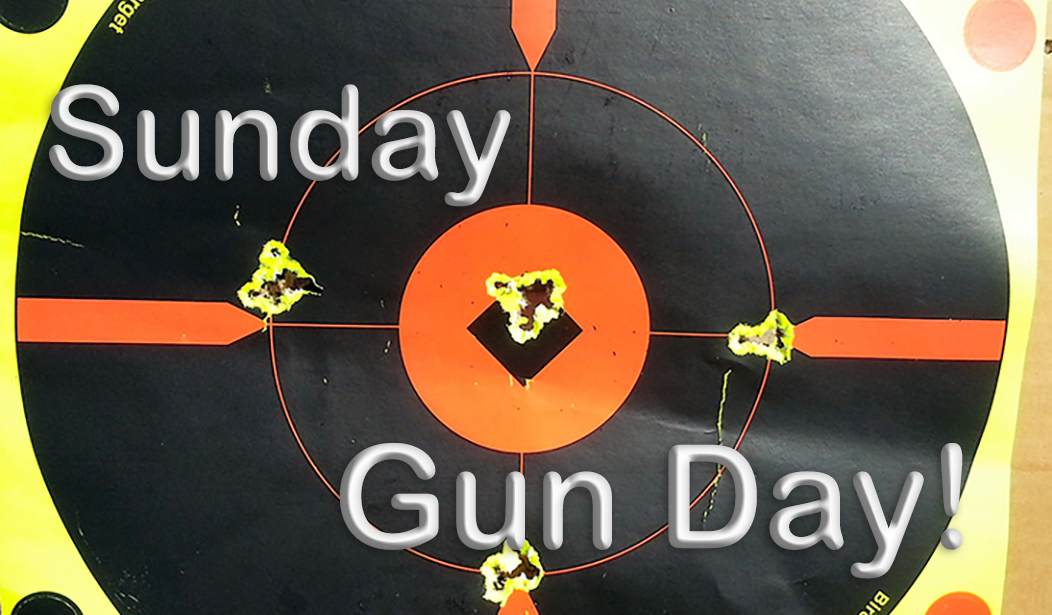The History of Guns is the History of War.
If there’s one firearms innovation that really changed the face of war, it’s the firearm. Guns in the hands of regular soldiers made armor obsolete. Guns writ large – cannon – largely erased the advantages of walled cities.
The military’s primary weapons were wheel-lock and later flintlock long guns for many years. Rifling was a significant innovation, but the real leap forward began with fulminate primers and then brass and copper cartridges. This allowed for repeating rifles and, later, the machine gun. Rate of fire was the order of the day, because there’s nothing grunts love more than accuracy by volume.
But before the advent of the self-contained cartridge, there was another way around the rate of fire issue. That way around? Volley guns. That is, multi-barreled guns, loaded individually but fired all at once with devastating effect.
In the Black Powder Days:
The black-powder era was a difficult one, where the rate of fire was concerned. This was accomplished mostly by troops in shoulder-to-shoulder formations volley-firing at (often) under a hundred yards. Reloading was facilitated by using smoothbore muskets with undersized balls, making reloading faster, but accuracy, not so great. Add cannon into the mix, and no matter what else happened, a lot of men on both sides got maimed and killed.
So, as you might imagine, many alternatives cropped up. The idea behind most of them was to make sure a lot more men on the other side got maimed and killed without exposing as many of your own. If that sounds familiar, it’s because that’s still a primary military operating procedure to this day.
There are many variations on this theme, but I picked three in particular that looked interesting. So let’s look at a few of these clever workarounds.
The Nock Volley Gun
This interesting piece was designed in the late 1700s – in 1779, the inventor, one James Wilson, came to the British Board of Ordnance with his volley gun – a shoulder-fired flintlock piece with seven barrels that would fire in quick succession when the trigger was pulled. The British Army gave it a pass, but the Royal Navy, then still in the “rum, sodomy and the lash” stage of development, thought it would be a remarkable piece for repelling boarders and so ordered 500 guns to be made by a London gunmaker, Henry Nock.
The piece’s seven .58-caliber barrels were arranged with six in a circle surrounding one in the center. The standard load for each barrel was a 500-grain ball and somewhere around 65 to 70 grains of black powder. Loading the beast was time-consuming, and recoil was reportedly brutal. In initial testing, several Royal Marines had their shoulders broken by the Nock, and so a redesign reduced the caliber to .46, with a correspondingly lighter load. Then the recoil was only punishing, not downright bone-breaking. Reloading took several minutes, making the gun of questionable utility beyond the first salvo – except, perhaps, as a club.
The Royal Navy issued the Nock guns for a quarter-century until no less an authority than Admiral Nelson pointed out that not only did the Nock guns knock around his sailors and Marines, but that the enormous blast from the seven short barrels ran a serious risk of setting sails and rigging afire.
Have you ever fired a big smoothbore musket, like the famous British Brown Bess? Now, imagine firing seven at once. Ouch.
Henry Nock came out of the deal very well, having received £13 each for the original 500 guns ordered, plus a later 150 copies; that’s a tad under $3,000 each in today’s American dollars.
Nock died in 1804. In one of those interesting historical twists, he had left his company to his son Henry and his son-in-law James Wilkinson. The young men continued making guns, then branched out into swords, eventually splitting off that end of the business into what would become Wilkinson Swords, which continued producing military long blades for the British armed forces until 2005.
See Also: Sunday Gun Day Vol. II Ep. I - The Amazing Puckle Gun
The Mitrailleuse
This may be one of the most interesting of all of the various volley weapons, and that’s in no small part due to its familiar design – a multi-barreled gun mounted on a carriage, in the manner of an artillery piece. And, unlike the older volley guns, this one used a self-contained cartridge or, rather, cartridges.
The first version of this was invented in 1851 by a Belgian army officer who carried around the impressive name, Toussaint-Henry-Joseph Fafchamps. His mitrailleuse, in its final form, had 25 barrels. Twenty-five early, self-contained centerfire cartridges were loaded into a steel block, which was clamped onto the breech of the gun. Then, turning a crank allowed the shooter to discharge all 25 rounds in short order. This novel loading and firing setup allowed an experienced crew to keep up a sustained rate of fire of 100 rounds per minute.
This was, in effect, among the very first machine guns, although the design didn’t last long, being supplanted first by the magazine-fed American Gatling, then by later single-barrel machine guns like the Maxim. The guns saw their only significant military use in the Franco-Prussian War.
The Duck-foot PistolThis was an odd affair, requiring neither a carriage mount nor a literal shoulder of steel. Most of these were percussion-fired (some early versions were flintlock) and had three barrels that diverged slightly to throw a pattern of round balls; thus, the moniker “duck-foot.” It was briefly popular with ship captains, with the idea that one could carry several of these around his person to repel boarders or, if one was truly unlucky, mutineers. Recoil, while not on the order of the Nock guns, was still considerable, as a pull of the trigger discharged all three barrels at once.
Loading the gun, again, was time-consuming.
The advent of the revolver swiftly rendered the duck-foot pistols obsolete; thank you, Colonel Colt.
See Also: Retrospective: Ten Weapons That Changed History
What About Now?
One could argue that the ultimate development of multi-barreled volley guns was the Gatling gun, and that concept is still in use today, in the motor-driven, multi-barreled Gatling guns by our military. There is the .30 caliber mini-gun, as well as the 20mm Vulcan cannon, and of course, the huge, 30mm Avenger cannon. That last is best known as the basis for the A-10 “Warthog,” a quintessentially American design where someone said, “Hey, I built this honking huge 30mm rotary cannon, I’m calling it the Avenger,” and someone else replied, “Hey, cool, but what if we put wings on it?”
These various Gatling-type rotary cannons are, at least so far, the ultimate development of accuracy by volume. Sometimes a good idea is worth hanging on to.














